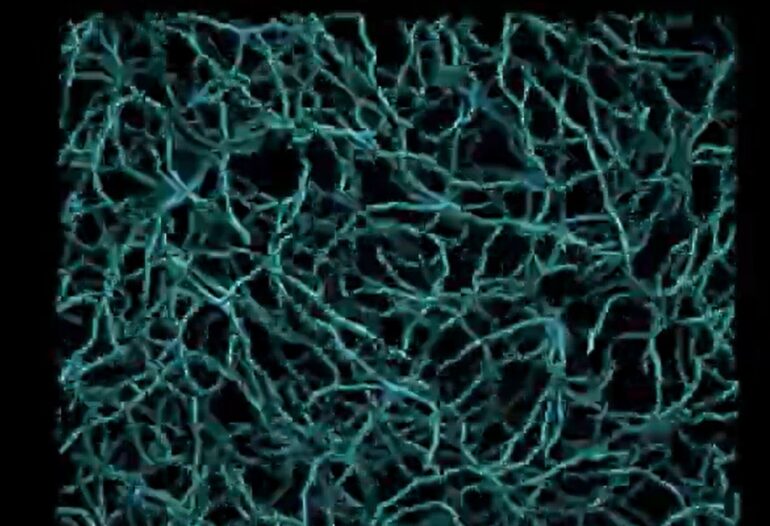- Researchers from Carnegie Mellon University and Los Alamos National Laboratory introduce a novel machine learning model for simulating chemical reactions.
- The ANI-1xnr model offers unprecedented accuracy and efficiency in predicting reaction energetics and rates.
- Unlike previous methodologies, ANI-1xnr requires significantly less computational power and time, making it accessible for diverse chemical studies.
- The model demonstrates versatility by successfully simulating various chemical scenarios, including biofuel additives and methane combustion.
- Potential applications extend to simulating biochemical processes, such as enzymatic reactions, with appropriate modifications.
- Future efforts aim to enhance the model’s scalability and adaptability, expanding its utility in fields like drug discovery.
Main AI News:
In a groundbreaking collaboration between Carnegie Mellon University and Los Alamos National Laboratory, researchers have leveraged machine learning to devise a cutting-edge model capable of simulating reactive processes across a diverse array of organic materials and conditions.
“This tool opens up avenues for exploring a multitude of reactions within this domain,” remarked Shuhao Zhang, a graduate student in the Department of Chemistry at Carnegie Mellon University. “We can now conduct comprehensive simulations of reaction mechanisms.”
Zhang serves as the primary author of a seminal paper titled “Exploring the Frontiers of Chemistry with a General Reactive Machine Learning Potential,” featured in Nature Chemistry, which outlines the development and outcomes of this pioneering machine learning model.
While previous attempts at simulating reactions encountered various challenges, the newly introduced machine learning framework, termed ANI-1xnr, offers a transformative solution. Traditional methodologies, such as reactive force field models, necessitated tailored training for specific reaction types, while quantum mechanics-based approaches demanded substantial computational resources.
The ANI-1xnr model represents a paradigm shift in reactive simulations, as elucidated by Olexandr Isayev, an associate professor of chemistry at Carnegie Mellon and the lead architect behind the model’s conception. Isayev attributes the breakthrough to advancements in machine learning, asserting that the model enables accurate predictions of reaction energetics and rates at a fraction of the computational expense.
“We’ve demonstrated the capability of training machine learning models at the pinnacle of quantum mechanics theory, enabling precise predictions of energies and forces with unprecedented efficiency,” Isayev stated. “This marks a transformative advancement in the realm of reactive simulations.“
Validation of the ANI-1xnr model across various chemical scenarios, including the evaluation of biofuel additives and the analysis of methane combustion, underscores its versatility and reliability. Notably, the model’s application in recreating the Miller experiment, a renowned chemical endeavor elucidating the origins of life on Earth, yielded remarkably accurate results in condensed phase systems.
Zhang emphasized the potential extension of the model’s utility into other realms of chemistry through additional training. “Our findings suggest prospective applications in simulating biochemical processes such as enzymatic reactions,” Zhang noted. “While not initially designed for such purposes, with appropriate modifications, the model could serve these ends.”
Looking ahead, the research team aims to refine the ANI-1xnr model to encompass a broader spectrum of elements and chemical domains, thereby expanding its applicability in diverse scientific endeavors. The pursuit of scalability and adaptability is poised to facilitate its integration into multifaceted fields, including drug discovery, where the design of novel chemical reactions holds profound significance.
Zhang and Isayev collaborated with a multidisciplinary team comprising Małgorzata Z. Makoś, Ryan B. Jadrich, Elfi Kraka, Kipton Barros, Benjamin T. Nebgen, Sergei Tretiak, Nicholas Lubbers, Richard A. Messerly, and Justin S. Smith in conducting this groundbreaking study.
Conclusion:
The development of the ANI-1xnr machine learning model represents a transformative milestone in chemical research. Its ability to accurately predict reaction outcomes with minimal computational resources heralds a new era of efficiency and accessibility in reactive simulations. Industries reliant on chemical innovation, such as pharmaceuticals and materials science, stand to benefit significantly from the enhanced capabilities offered by this groundbreaking technology.

